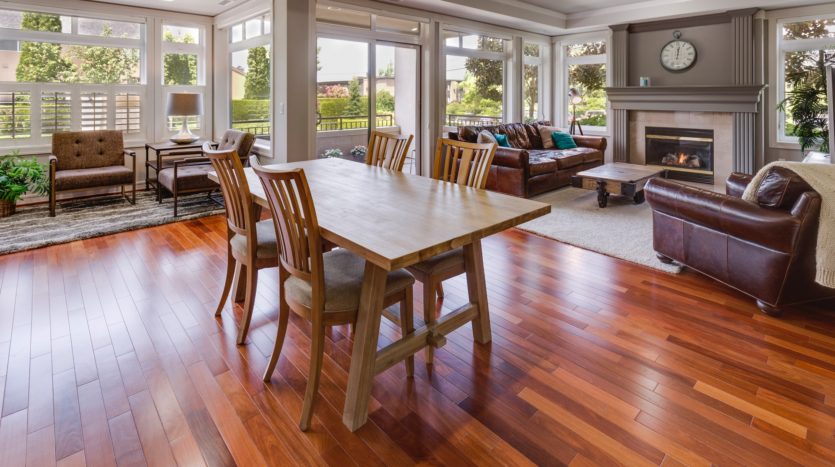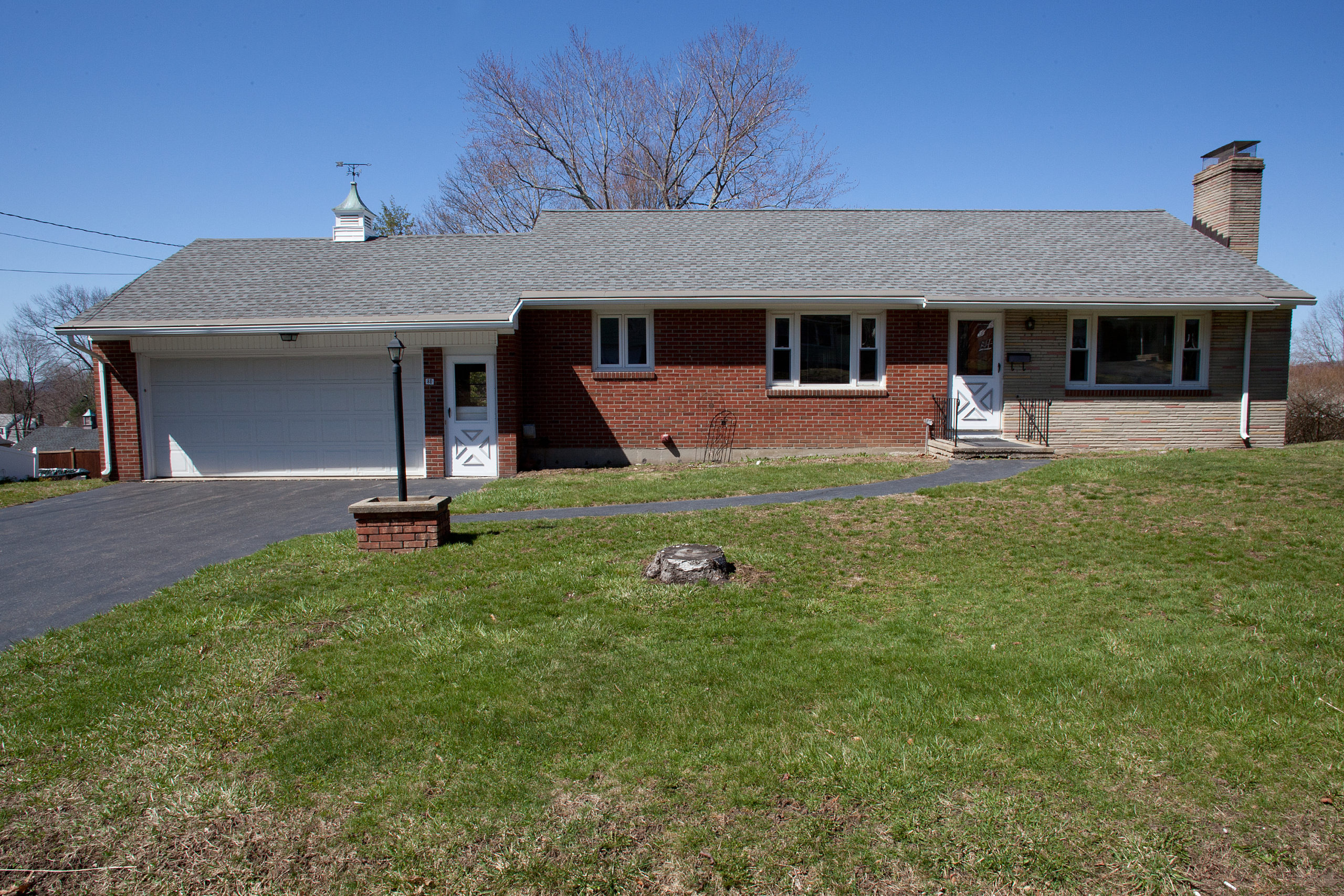Are you wondering what your CT home is worth?
Maybe you’re planning to sell and you want to know how much money you can expect to receive from the sale. Or maybe you’re planning to refinance and need to figure out the current value to calculate your equity.
Valuing real estate is difficult for two key reasons:
- Every piece of real estate is unique. Even in a planned community with cookie-cutter homes, each house is on a lot that occupies a unique location on earth. This uniqueness means you can’t just go online, type in the model number and see how much other products of the same kind are selling for.
- Markets are constantly changing. As of February 2021, the Connecticut housing market was up 18% from the previous year in terms of homes sold, and up 21% in sales price. The market is moving so fast that home valuations are outdated a month after they’re calculated!
The easiest way to find out what your home is worth is to contact me. I professionally value homes every day, so my finger is on the pulse of the market. And I gladly provide free, custom home valuations with no obligation.
But if you’re interested in calculating the value of your home on your own, or you’re curious to learn more about the process, keep reading!
Can I Use Zillow’s Zestimate®?
To find out what your home is worth, you might be tempted to look at the Zestimate® on Zillow’s website. With all the housing and pricing data processed through Zillow, you would think this value estimate would be somewhat reliable.
Unfortunately, the Zestimate has a wide margin of error.
When Zillow’s co-founder and former CEO, Spencer Rascoff, sold his Seattle-area home in 2016, industry publications watched to see how well the Zestimate would hold up. He ended up selling for 40% less than the Zestimate. And when he listed his Brentwood home for sale in 2020, he priced the listing around 33% higher than the Zestimate (although, to be fair, the house never sold at that price, and the listing was taken off the market).
If you look at Zillow’s track record for homes in Connecticut that are not currently listed for sale, you’ll find that only 31% of Zestimates are within 5% of the fair market value. 54% are with 10% of the, and 80% are within 20% (as of September 2020). And if you’re thinking, well, 80% is pretty good, remember it’s fairly easy to get within 20% of the fair market value. 20% is a large window. If your home is worth $290,000, a 20% margin would be anywhere from $232,000 to $348,000.
So, please, do not use the Zestimate to find out what your home is worth!
How to Calculate What Your CT Home is Worth – Like a Pro
I’m going to let you in on the exact process I use as a real estate professional to determine the real value of a home.
It’s a three-step process:
- Step 1: Find Comparable Properties
- Step 2: Make Value Adjustments
- Step 3: Calculate a Weighted Average
Step 1: Find Comparable Properties
Since each piece of real estate is unique, we need to rely on the sales prices of comparable properties to determine how much a home is worth.
As the name implies, comparable properties (called comps for short) are properties that are similar to your own. Similar size, number of rooms, location, view, land area… these factors all matter when deciding which properties are comparable enough to yours to be considered a good comp.
You want to end up with three to five strong comps.
Let’s take a quick closer look at some of these factors that make a good comp.
1. Timing of the Sale
One of the most important factors actually has nothing to do with the land or building. It’s about the timing of the sale. A house that sold two years ago would be identical to your house, but it still wouldn’t be a good comp because the market would have changed too much in that time.
Focus on sales in the last six months. The closer the sale date is to today’s date, the more accurate the value will be.
You might see homes on the market that are similar to yours, but until they sell, they aren’t ideal comps. The list price could be wildly over or under market. It isn’t a reliable price until someone pays that price to own the property.
2. Similarity
Choose comps that are similar to your home in terms of:
- Square footage,
- Number of bedrooms,
- Number of baths,
- Age,
- Land area, and
- Condition
The more similar the comp, the better.
3. Location
You’ve heard every real estate agent say it a million times: location, location, location.
Location is critical when evaluating comps. As a very general rule-of-thumb focus on comps within the following ranges:
- Cities: ½ mile
- Suburbs: 1 mile
- Country: 5 miles
Pay special attention to specific barriers like city limits, school districts, and planned community boundaries as these will all impact a home’s value.
4. Special Features
Does your home have a fireplace? A pool? A view? An outdoor space for entertaining?
Special features like these add value to a home. So it’s best if you can find comps with similar special features.
5. Ignore the Prices!
Sales price is one thing you should not consider when choosing your comps.
The purpose of choosing comps is to calculate a correct price, so if you allow price to be a factor, it skews your results.
Prioritizing the Factors
Which is a better comp: a property just like yours that sold 9 months ago or a property that’s got an extra bedroom and a pool, but sold just last week?
The answer: it depends on the market. In a fast market like we’re seeing today, I would choose the recent sale because the sale from nine months ago is too outdated to be valuable. But if we were in a stagnant market with values remaining flat for a year, the older sale would be the better comp.
This is the art of valuation. This is why people pay hundreds of dollars for a formal appraisal when the appraiser uses this same basic process.
Step 2: Making Value Adjustments
To make sure you’re comparing apples to apples when you look at your comps versus your home, you need to make value adjustments to the comps.
This is best explained with an example.
Let’s say you have a three-bedroom home. Three of your comps are three-bedroom homes, but then you also have a two-bed comp and a four-bed comp. How would we adjust the comp values?
- The three-bed homes already match your house in terms of bedrooms, so no adjustments need to be made to those comps on the basis of number-of-beds.
- But for the two-bed comp to really compare to your three-bed, we need to pretend it has a third bedroom. We want to know what the sale price for that home would have been if it had a third room. So we need to add the value of an additional room to the sales price of that comp.
- And for the four-bed: we want to know what the sales price would have been if that house had only had three bedrooms. So we need to subtract the value of a bedroom from the sales price of that comp.
Once you adjust the value of each comp to account for any material differences (differences big enough to affect the value), you’ll have an “adjusted value” for each comp. This is the hypothetical value the comp would have sold for if it had actually been much more like your property.
What Dollar Amount to Use for the Adjustments
The problem we quickly run into is: how do we know the value of a bedroom? And this is a difficult problem to address because the answer (like everything in real estate) is a moving target.
In family-friendly neighborhoods, extra bedrooms could be worth a lot of money. But in urban condos, extra rooms may be seen as a waste of space and money, so they’ll be worth less. And, again, markets are always changing. So an extra room today could be worth more than it was a year ago.
And this is just for the bedrooms! We still need to make value adjustments for all the other factors.
This is why it’s so difficult for homeowners (and for Zillow!) to calculate the fair market value of a property. When you aren’t dealing with real estate pricing all day, every day, you won’t know what dollar values to use for adjustments.
And this is why it makes sense to have a licensed Realtor® complete a valuation for you. As I mentioned, I offer free valuations for local homeowners, so please reach out if this process feels overwhelming.
Step 3: Calculating a Weighted Average
At this point, you can average your comps to get a ballpark idea of what your home is worth. But to get a better idea, you need to calculate a weighted average.
This concept is also best explained as an example.
Let’s say you have 3 good comps, with values as follows:
- Comp #1: $315,000
- Comp #2: $290,000
- Comp #3: $305,000
The average would be $303,333.33 ((315,000+290,000+305,000)/3).
But what if Comp #1 is more similar to your property than Comps #2 and #3. So you decide to weight Comp #1 50%, and the other two at 25%.
- Comp #1: $315,000 (x 50% = $157,500)
- Comp #2: $290,000 (x 25% = $72,500)
- Comp #3: $305,000 (x 25% = $76,250)
The weighted average would be $306,250 (157,500+72,500+76,250).
In our example, the weighted average of $306,250 is more accurate than the standard average of $303,333.
This weighted average is how much your home is currently worth.
Let Me Do the Hard Work for You … For Free!
As a real estate professional, I calculate home values every single day. It’s how I advise my sellers on realistic listing prices and how I advise my buyers on strong offer prices.
If you want to find out what your home is worth, you can simply contact me. I’ll ask you some questions about the home, do some research, and get you a custom value analysis. All without any fee or obligation.
You deserve to get a real answer on how much your house is worth. Let me help you find out.








